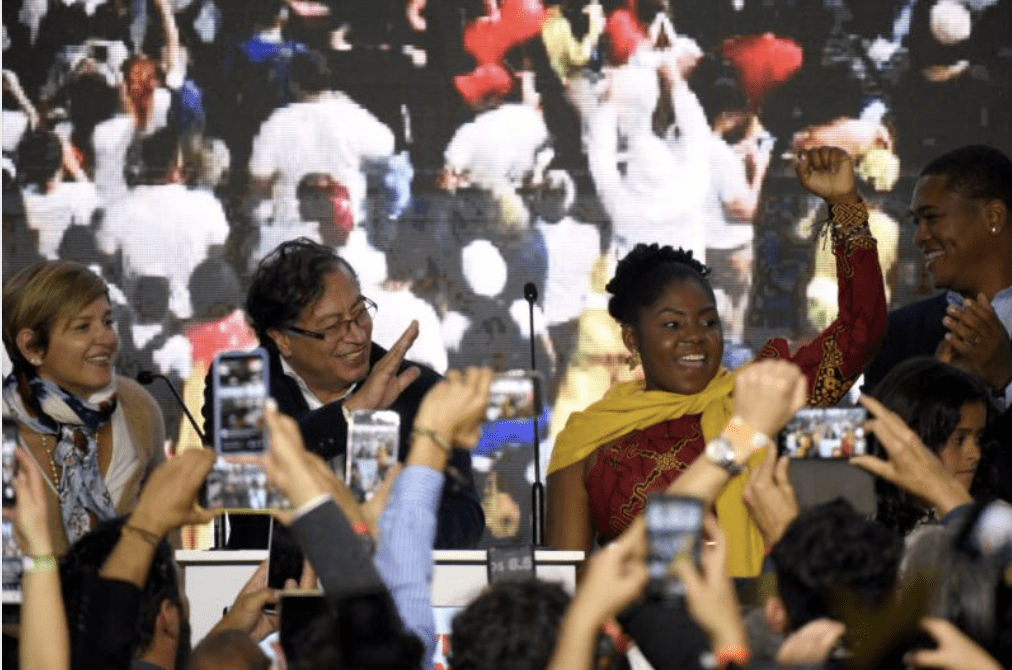 The campaign towards the runoff on June 19 could further polarize the country.
The campaign towards the runoff on June 19 could further polarize the country.
As polls had predicted, Gustavo Petro (Pacto Histórico) placed first in the first round of the Colombian presidential election on May 29 with a 40% lead. The runner-up, Rodolfo Hernández (Independent) who had surged in polls in the last few weeks, amassed 28% of the preference.
The campaign towards the runoff election for the Colombian presidency on June 19 has already started with Hernández receiving the support of the third-place candidate, Fico Gutiérrez, who received about 24% of the votes.
AQ asked several observers to share their reaction.
Theodore Kahn, senior analyst in Control Risks’ Global Risk Analysis practice
Colombians delivered a stunning rejection of the traditional political class in the first round of presidential elections on Sunday. Gustavo Petro, a left-wing former guerrilla, finished first with 40.3% of the votes—the best performance for the left in Colombia’s modern history. Petro wants to overturn the social and economic model by ending new oil and mining exploration, guaranteeing public jobs for the unemployed, and ramping up protection for domestic industry and agriculture. The runner-up, Rodolfo Hernández, is an ideologically ambiguous populist and political outsider. His campaign, notably light on policy proposals, was all about throwing out the corrupt political class. Federico Gutiérrez, a conservative who had the support of traditional political parties, finished third, winning only in his native Antioquia department.
Hernández had been gaining fast in the polls in the two weeks leading up to the first round, but many analysists questioned whether this would translate into votes. It did. Hernández dominated in the Central and Eastern regions of Colombia, winning 13 of 32 departments overall. His support in rural areas and small towns in the Andean heartland was overwhelming. Hernández won all but 4 of the 123 municipalities of Boyacá department and all but 10 of 116 municipalities in Cundinamarca.
What explains this unexpected success? First, it is clear he occupied a strategic space in the political field, at the intersection of anti-establishment and anti-Petro sentiment. Second, while other candidates debated policy (occasionally) and traded insults on Twitter (often), Hernández hammered away at a simple message: corrupt traditional politicians are to blame for all the country’s problems. In this regard, he may have exposed a weakness in Petro’s campaign that few saw coming—after four years in the national political spotlight, Petro had become part of the political class for many voters. Finally, the cantankerous 77-year-old proved a master of social media—TikTok being his platform of choice.
Whatever the explanation, one thing is clear: Hernández, who was barely known outside his native Santander department several months ago, is now on the doorstep of Casa de Nariño. He is riding a wave of momentum driven by two powerful forces—anger at the establishment and fear of the left. He will likely attract a large majority of the more than 5 million voters, mostly conservatives, who supported Gutiérrez on May 29. He will also draw backing from more progressive sectors such as the Green Alliance party and other parties that formed part of the center-left Hope Coalition.
How Hernández would govern remains a mystery. In the coming days, he will start to unveil a potential cabinet, which will likely include market-friendly technocrats that reassure the political and economic elite. His campaign platform reflects his instincts as a self-made businessman: he wants to cut taxes and red tape while also protecting and promoting domestic industry. Of course, it would be a mistake to count Petro out. He won over 8.5 million votes on the first round, with commanding victories in major cities such as Bogotá and Cali, and the populous Caribbean coast.
Whoever wins will face the enormous challenge of meeting the powerful demand for change that drove Colombians to the polls on May 29.
